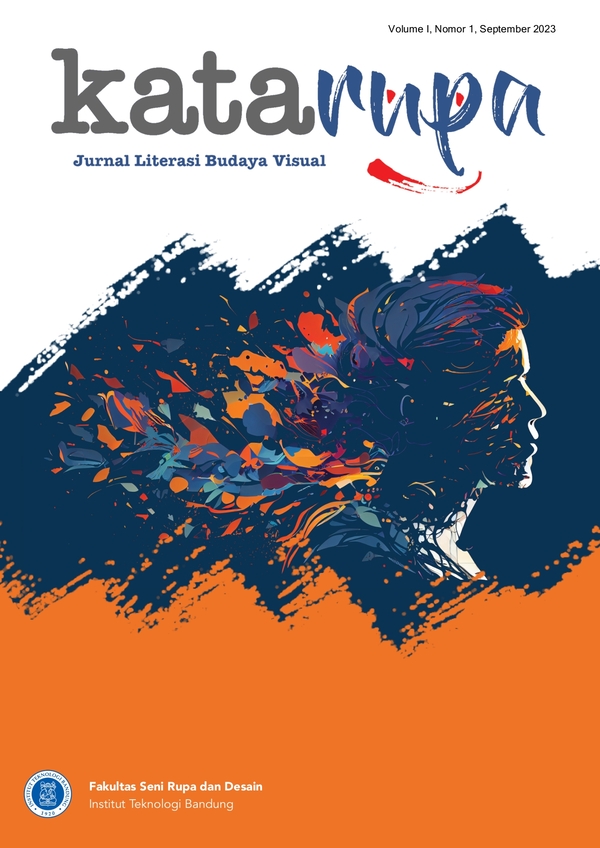TANDA DALAM SEMIOTIKA RUANG UNTUK DESAIN RUANG TERBUKA PUBLIK KAMPUS
(Studi Kasus: Sunken Court ITB)
Keywords:
Sunken Court ITB, students UKM activities, spatial semiotics, spatial languageAbstract
Sunken Court ITB is one of the public open spaces that serves as a venue for various types of Student Activity Units (UKM) at ITB. In addition, this place also serves as a pedestrian pathway connecting the ITB campus with Saraga ITB. By using the theory of spatial semiotics and analyzing it through the semiotic methods of Saussure/Barthes, this research aims to identify the factors in the spatial language that enable this public space, despite being crowded with various types of UKM and different activities, to foster mutual respect, establish boundaries for their activities, and promote good socialization. It was found that there are several factors in the spatial language that enable Sunken Court ITB to fulfill its role as a public open space in addressing these aspects. These factors include distance, framing, and facilities within the public space.
References
Alnusairat, S., Ayyad, Y., & Al-Shatnawi, Z. (2021). Towards Meaningful University Space: Perceptions of the Quality of Open Spaces for Students. Buildings, 11(11), 556. https://doi.org/10.3390/buildings11110556 (Jurnal Ilmiah)
Alwah, A. A. Q., Li, W., & Al-Attar, A. N. M. (2020). Characteristics of visiting urban open spaces in Sana’a city in Yemen. IOP Conference Series: Earth and Environmental Science, 608(1). https://doi.org/10.1088/1755-1315/608/1/012002 (Jurnal Ilmiah)
Carr, S., Francis, M., Rivlin, L. G., & Stone, A. M. (1992). Public Space. Cambridge University Press. (Buku)
Dong, W., Wu, J., Chen, Y., & Zhou, X. (2023). A Bibliometric Review of Research on the Perceptions of Campus Public Spaces. Buildings, 13(2), 501. https://doi.org/10.3390/buildings13020501 (Jurnal Ilmiah)
Dovey, K. (2002). Framing places: Mediating power in built form, second edition. In Taylor & Francis e-Library. Routledge. https://doi.org/10.4324/9781315881430 (Buku)
Farag, A. A., Badawi, S. R., & Doheim, R. M. (2019). Assessment of user happiness in campus open spaces. The Journal of Public Space, Vol. 4 N. 1 | 2019 | FULL ISSUE, 45–64. https://doi.org/10.32891/jps.v4i1.566 (Jurnal Ilmiah)
Hall, E. T. (1982). The Hidden Dimension. In Anchor Books Edition (Vol. 4, Nomor 1). (Buku)
Lawson, B. (2007). Language of Space. Architecture Press. (Buku)
Rossini, F., & Yiu, M. H. (2021). Public open spaces in private developments in Hong Kong: new spaces for social activities? Journal of Urbanism: International Research on Placemaking and Urban Sustainability, 14(2), 237–261. https://doi.org/10.1080/17549175.2020.1793803 (Jurnal Ilmiah)
Soares, I., Weitkamp, G., & Yamu, C. (2020). Public Spaces as Knowledgescapes: Understanding the Relationship between the Built Environment and Creative Encounters at Dutch University Campuses and Science Parks. International Journal of Environmental Research and Public Health 2020, Vol. 17, Page 7421, 17(20), 7421. https://doi.org/10.3390/IJERPH17207421 (Jurnal Ilmiah)
Zivkovic, J., Lalovic, K., Milojevic, M., & Nikezic, A. (2019). Multifunctional public open spaces for sustainable cities: Concept and application. Facta universitatis - series: Architecture and Civil Engineering, 17(2), 205–219. https://doi.org/10.2298/FUACE190327012Z (Jurnal Ilmiah)


